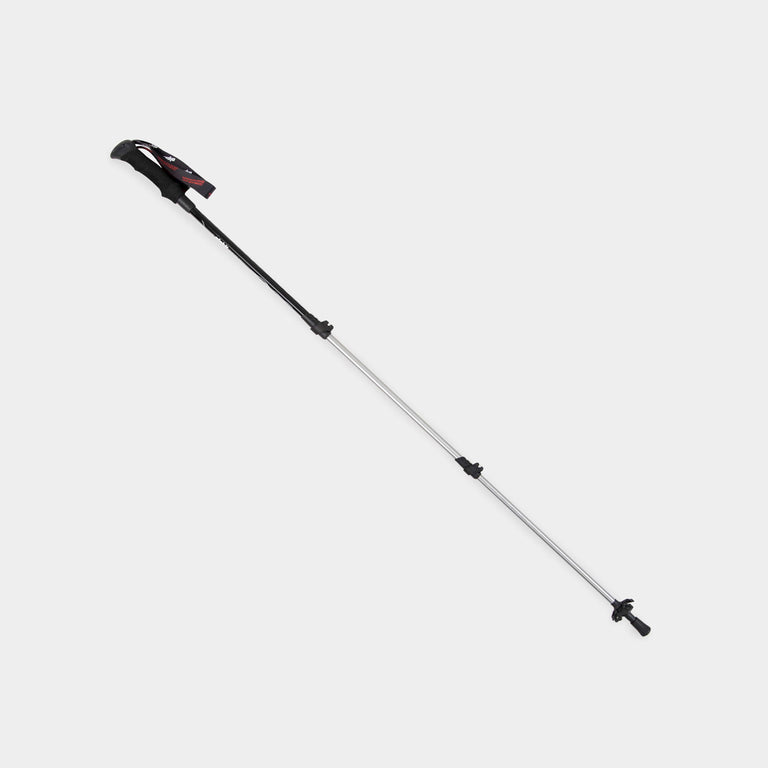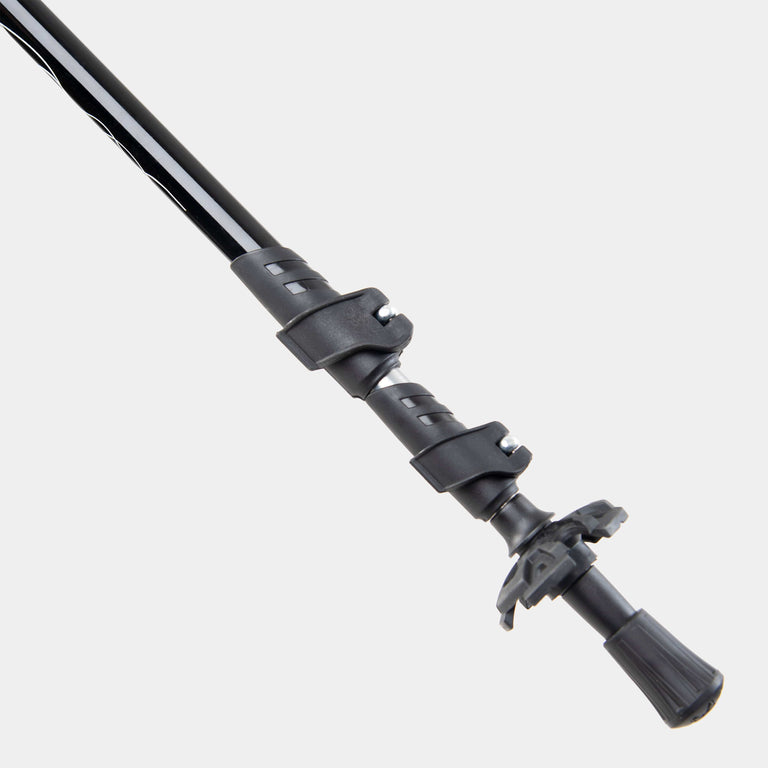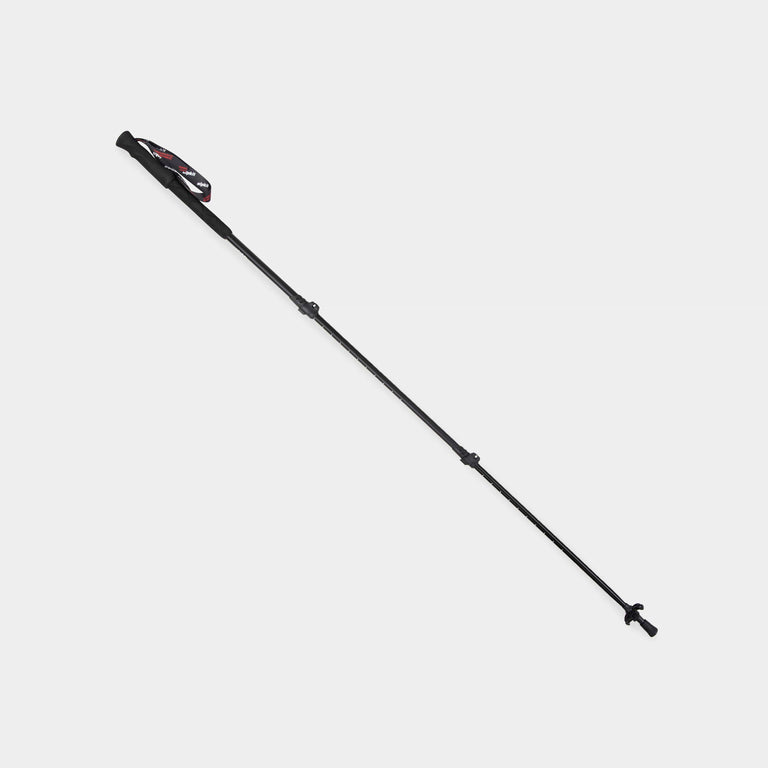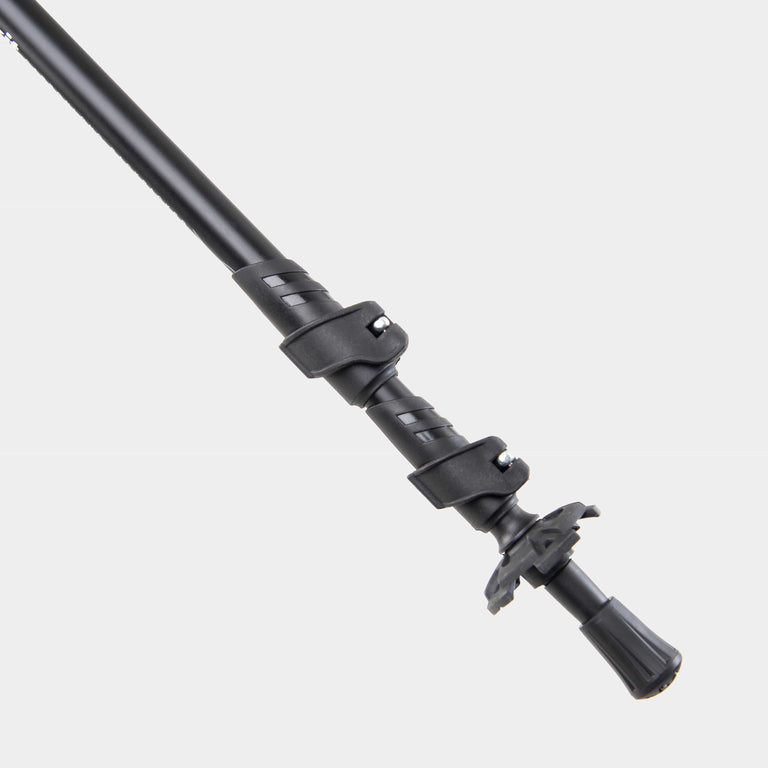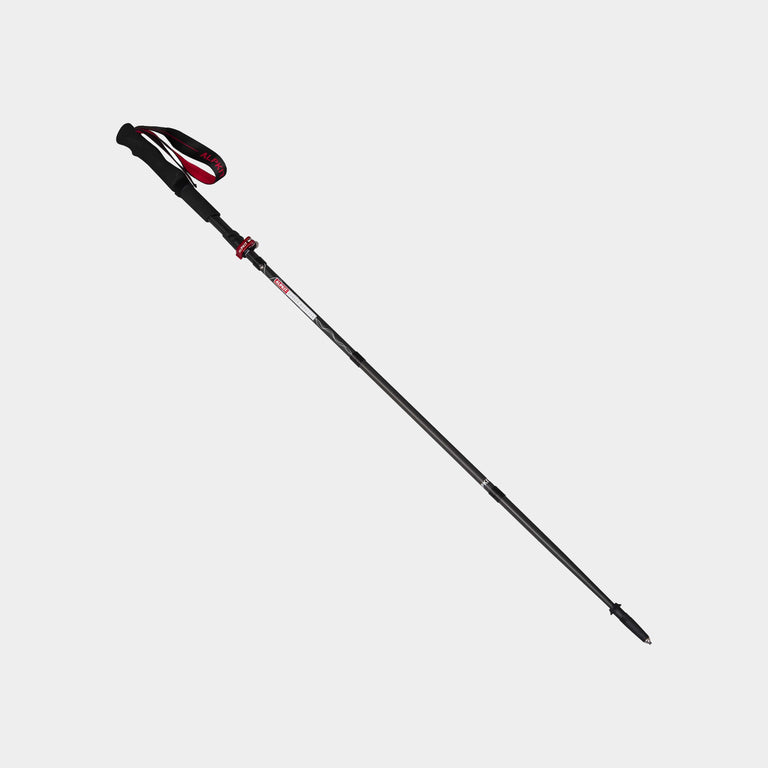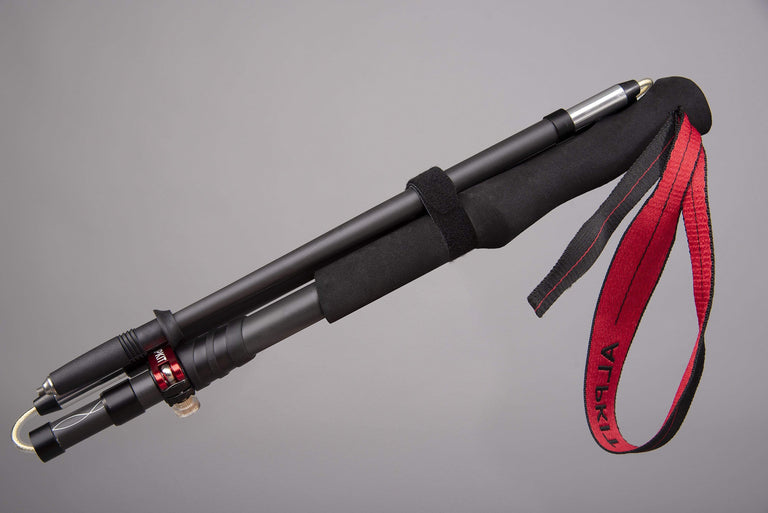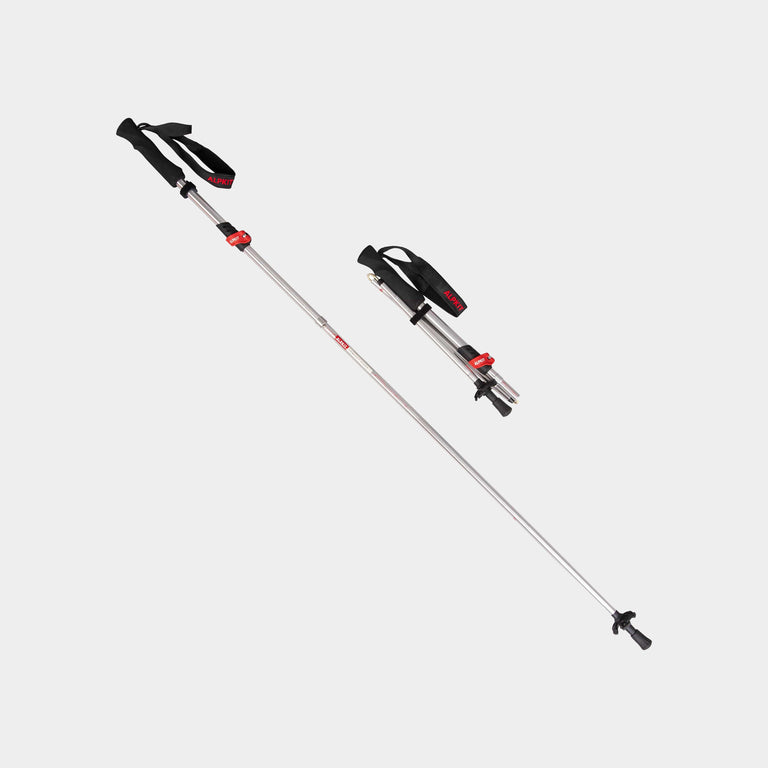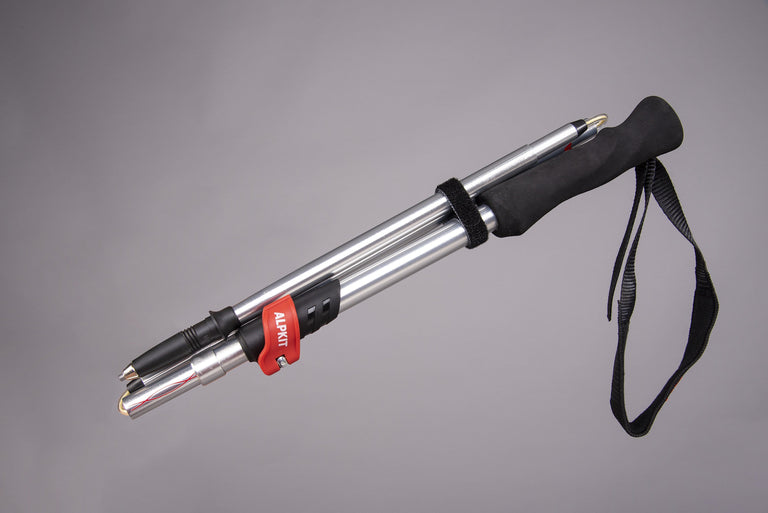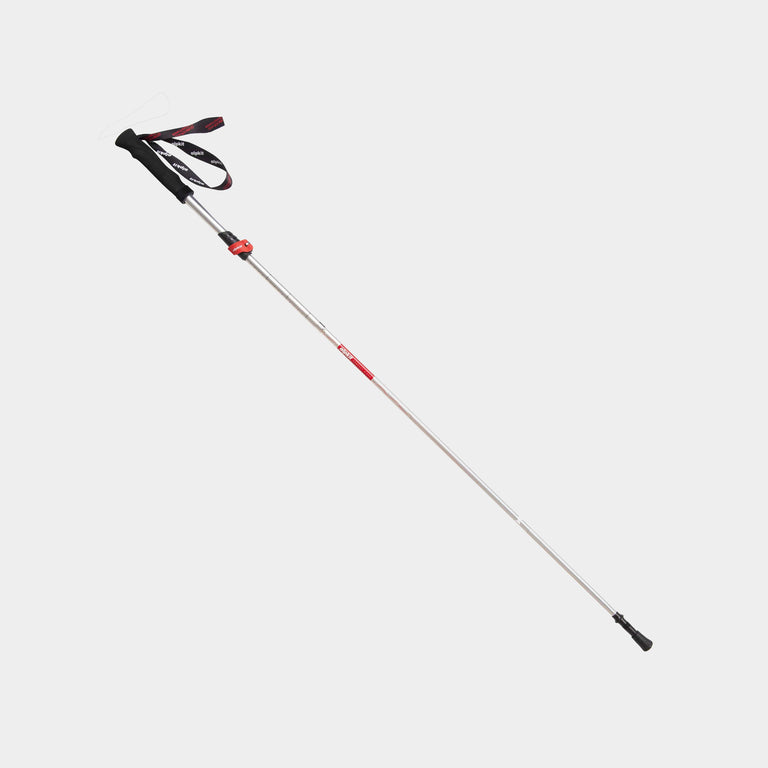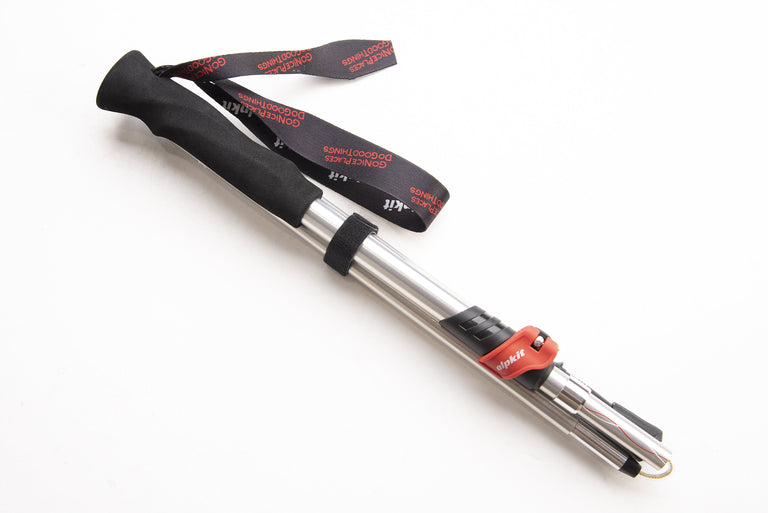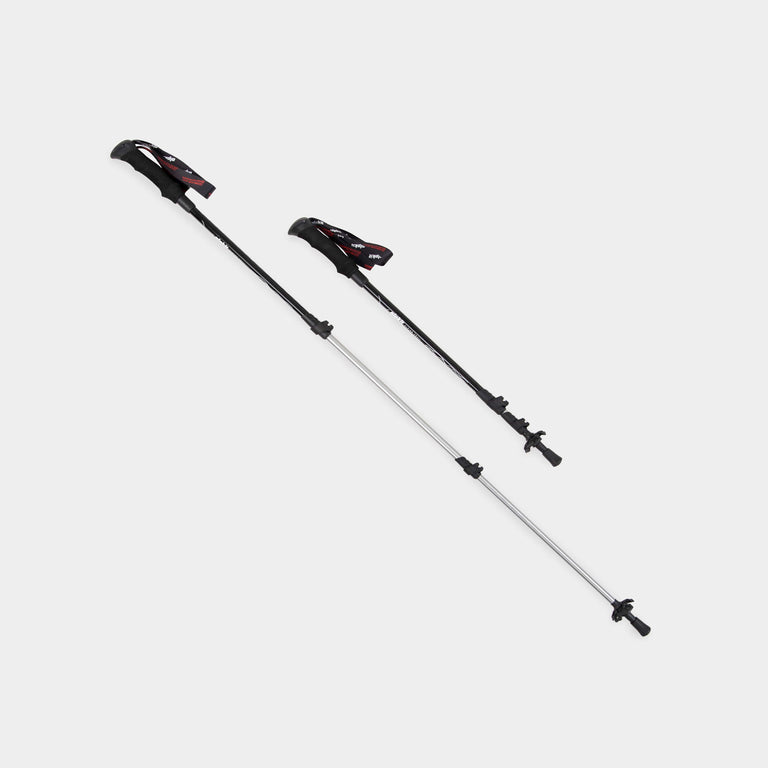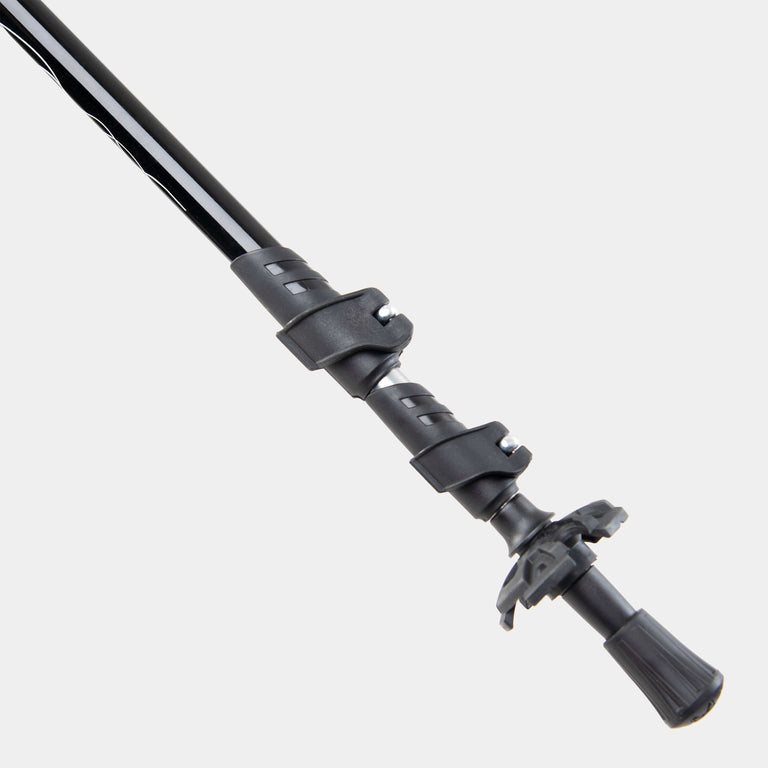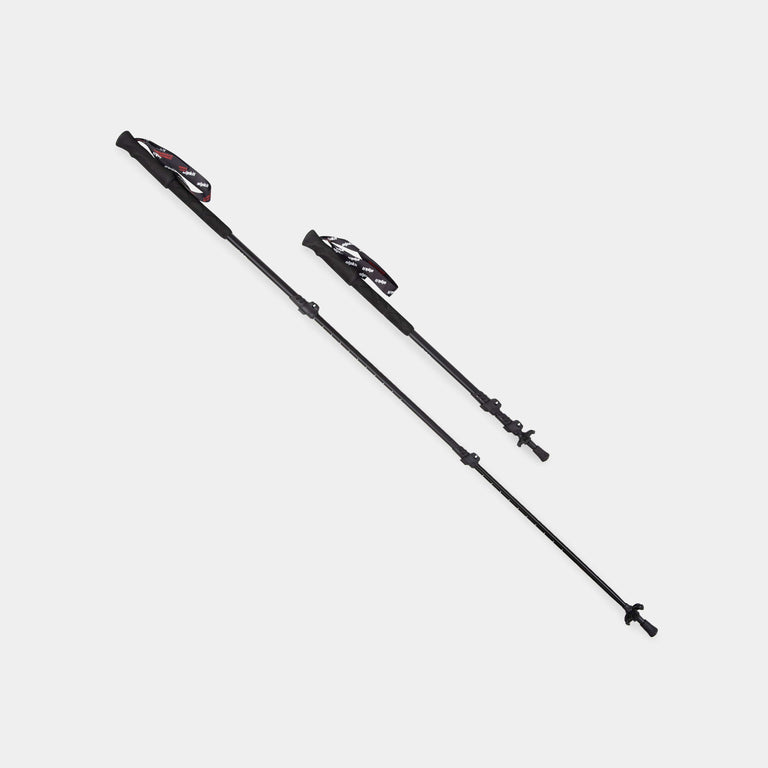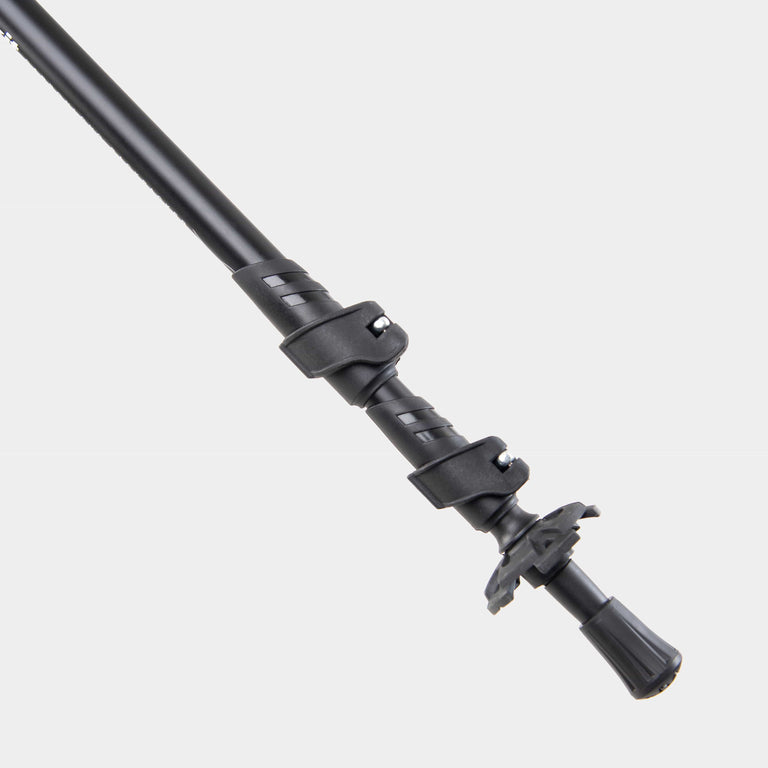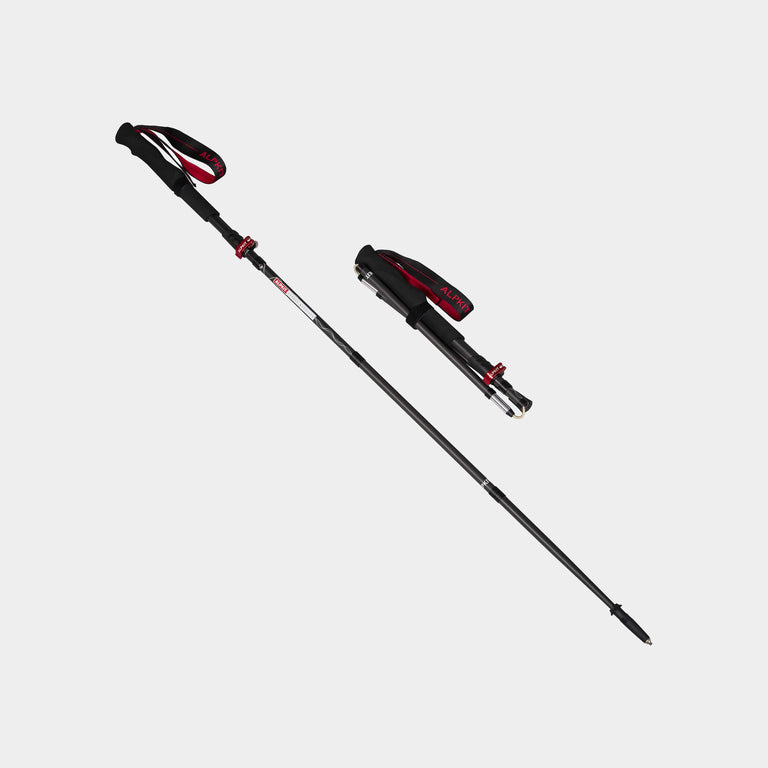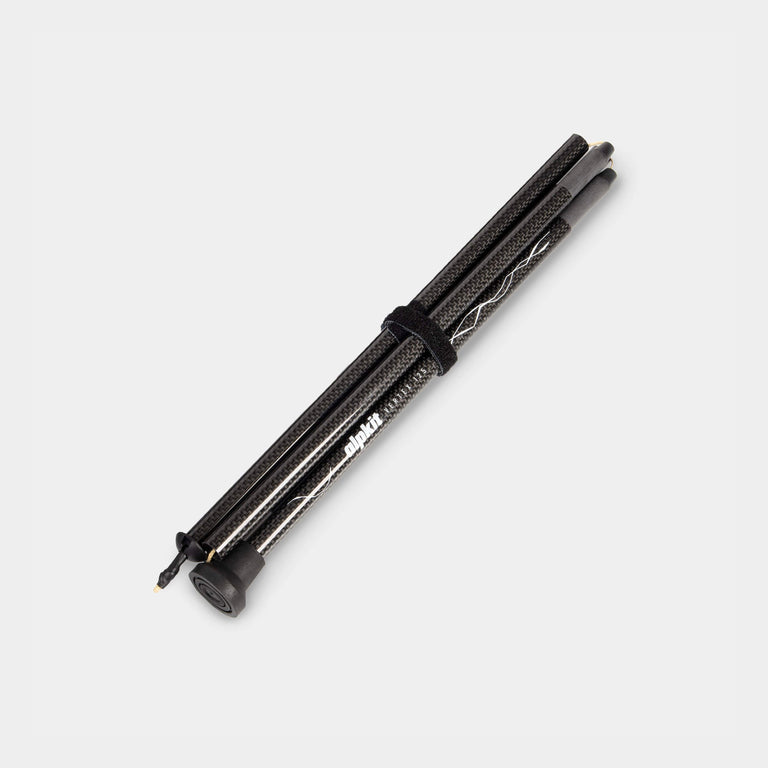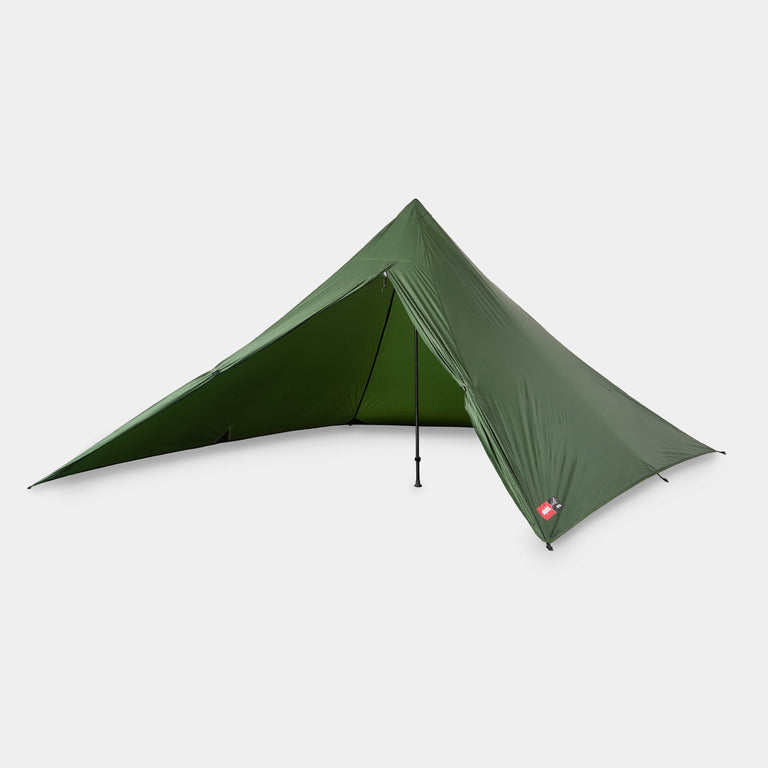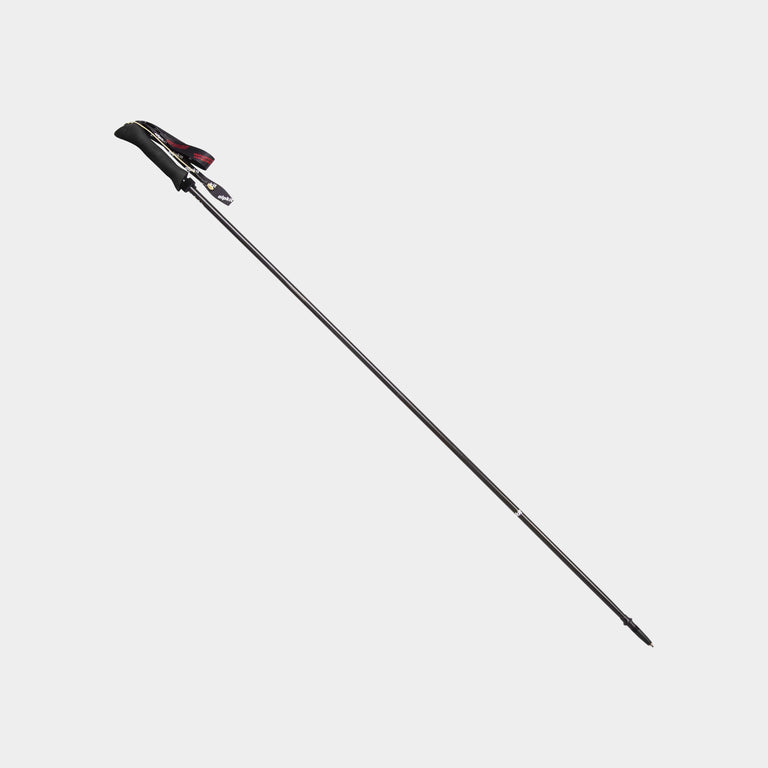
Trekking poles are crucial for navigating Alpine terrain and carrying loads, whether it's a day hike or multi-day expedition
This article explores the beneficial role of trekking poles when hiking in the Alps. It sheds light on the advantages of using these unsung trail heroes, offering practical insights for beginners and seasoned trekkers.
Trekking in the Alps and the importance of trekking poles.
A couple of weeks of trekking around the Alps is an experience many of us hikers relish each year. This vast mountain range, spanning several European countries, offers breathtaking vistas, challenging terrain, and a chance to connect with nature like never before.
Traversing this Alpine landscape can be demanding, with steep ascents, uneven paths, and varying weather conditions. This is where trekking poles come into play.
Once you have experienced their benefits, they become an indispensable companion for your Alpine adventurers, providing essential assistance in maintaining balance, reducing the strain on joints, and enhancing stability.
Whether embarking on a day hike, a hut-to-hut expedition, or a multi-day backpacking adventure, trekking poles are not just accessories to strap onto your pack; they are tools that make the Alps' wonders accessible and your journey safer and more enjoyable.
In this article, we will delve deeper into the benefits of using trekking poles, helping you make the most of your Alpine trekking experience.
Benefits of trekking poles
Trekking poles are more than just additional equipment for hikers; they are valuable tools that offer a range of benefits, enhancing the overall trekking experience in the Alps and other challenging terrains. Let's delve into the numerous advantages they provide:
Better Balance
Trekking poles significantly improve balance and stability, especially on uneven, rocky, or steep terrain. They act as additional contact points with the ground, distributing your weight more evenly and preventing slips and falls. This is particularly crucial when navigating often unpredictable Alpine trails. trekking poles provide added stability, especially when crossing streams, traversing snowfields, or negotiating slippery surfaces. They can offer a sense of security in challenging conditions, boosting your confidence and reducing the risk of accidents.
Reduced Joint Strain and Fatigue
Hiking in the Alps often involves long descents and ascents, which can strain your knees and ankles considerably. trekking poles help absorb some of the impact, reducing the stress on your joints and muscles. This benefit becomes especially evident during extended hikes or multi-day backpacking trips, allowing you to maintain a more comfortable and sustainable pace. By transferring some of your weight to your arms and upper body, trekking poles can reduce overall fatigue. This translates to more endurance and energy reserves for longer treks.
Enhanced Propulsion
When hiking uphill, that's why you like the Alps, right? You can use trekking poles to push off the ground, giving you extra legs. This provides a more efficient means of propulsion, helping you ascend slopes with less effort.
Improved Posture
Trekking poles encourage better posture, naturally promoting an upright stance and engaging your core muscles. This reduces the risk of back strain and enhances breathing and oxygen intake, particularly at higher altitudes.
Versatility
Let's remember trekking poles are very versatile tools that can be adapted to various situations. They can serve as tent poles in lightweight camping setups such as our Tarpstar and help you safely traverse stream crossings.
The advantages of poles are clear. They provide improved balance, reduce joint strain, enhance stability, and improve overall comfort and safety. Whether you're embarking on a day hike, hut-to-hut adventure, or multi-day backpacking journey, trekking poles can significantly enhance your trekking experience. So, how do you choose the best trekking poles?
Choosing the right trekking poles
Selecting the ideal trekking poles is crucial for any hiker embarking on an Alpine adventure. The right choice can enhance your trekking experience, providing essential support and comfort. When making this decision, consider the terrain, personal preferences, and budget.
Terrain
The first step in choosing your trekking poles is to evaluate the terrain. Telescopic or adjustable poles with shock absorbers are typically recommended for rugged and uneven terrain. These poles allow you to customise their length to match the changing landscape, ensuring stability on both ascents and descents. On the other hand, if you plan to primarily trek on flat or less demanding trails, fixed-length poles may suffice and are often more budget-friendly.
Material and Weight
Trekking poles come in various materials, such as aluminium and carbon fibre. Aluminium poles are durable and more budget-friendly but can be slightly heavier. Carbon fibre poles are lightweight and ideal for long-distance treks but tend to be a bit more expensive. Your choice should align with your budget and how much weight you are willing to carry.
Grip Preferences
The grip or handle of your trekking poles is a personal preference. Standard options include foam, cork, and rubber. Cork grips are comfortable and absorb sweat well, making them popular among many hikers. Foam grips are lightweight and insulating, ideal for cold weather. Rubber grips provide durability and a secure hold, especially when wearing gloves. Consider which grip material feels most comfortable in your hand over extended periods of use.
Locking Mechanism
Trekking poles typically feature either external or internal locking mechanisms. External locks use a small lever and a collar which compresses against the shaft. They are easy to adjust, especially with gloved hands. Internal locks have an expanding widget which compresses against the inside of the pole shaft with a twist. Although they offer a sleeker design, they are more challenging to adjust and prone to getting stuck.
Take your time choosing; finding the perfect trekking poles will undoubtedly contribute to a more enjoyable and comfortable trek.
Techniques for efficient use
Trekking poles are versatile tools that can significantly enhance your hiking experience. Here are some pro techniques to ensure you get the most out of your trekking poles:
Proper pole length
Adjust the length of your trekking poles to match the terrain and your height. For uphill climbs, shorten the poles to give you better leverage. For downhill descents, lengthen the poles to help absorb shock and provide stability. A general rule is to set the poles at a length where your forearms are parallel to the ground when holding the grips.
Planting the poles
When planting your trekking poles, aim for a 45-degree angle between the pole and the ground. This angle provides the most stability and support. Ensure that the tips of the poles make solid contact with the ground, especially on uneven or loose surfaces.
Opposite arm and leg movement
Coordinate your pole movements with your steps. As you step forward with your right foot, plant the left trekking pole, and vice versa. This creates a rhythm that helps maintain balance and reduces stress on your joints. It also engages your upper body muscles, providing additional support. You are going to feel really good after this trip.
Uphill techniques
When the going gets tough, and you find yourself ascending steep slopes, shorten your poles and use them to push yourself upward. Plant the poles firmly in front of you and push down to propel yourself forward (you still have to move your feet). This technique reduces the strain on your legs and offers more efficient climbing.
Downhill Techniques
Do not underestimate how fatiguing a descent can be. For descending steep terrain, lengthen your poles to provide stability. Use the poles to catch your weight as you step down, reducing the impact on your knees and ankles. Take shorter steps, and keep your weight slightly back to maintain balance.
Stream Crossings
Use your trekking poles for balance and support when crossing streams or rivers. Plant the poles upstream from your body, angled slightly upstream, to help brace against the current and prevent slips. Release your hands from the wrist straps to avoid a jammed pole pulling you over. Anyone who has been punting on the Cam will know what we mean.
Ice and Snow
In snowy conditions, you finally get to use your snow baskets on your trekking poles. These little terrors improve grip and prevent them from sinking into soft snow. Use shorter, more frequent pole plants for added stability. Ideal for snowshoeing.
Energy Conservation
Relax your grip on the handles to conserve energy and reduce hand fatigue. If your knuckles are going white, you are gripping too tight. You should place your wrist through the wrist straps for extra support. Your poles should provide support without requiring a tight grip. Maintain a natural arm swing and rhythm using the hinge action of the strap to avoid overexertion.
Tread Lightly
Be mindful of the environment and avoid damaging fragile Alpine ecosystems. Lift your trekking poles when walking on delicate flora or sensitive areas to minimise impact.
Mastering these trekking pole techniques allows you to navigate the diverse and sometimes demanding Alpine terrain with increased confidence, comfort, and safety, ensuring a more enjoyable hiking experience.
Trekking poles for different adventures
Trekking poles are versatile tools that provide remarkable assistance across a range of hiking adventures, from day hikes to hut-to-hut journeys and extended backpacking trips in the Alps. Let's drill down into some specific scenarios to see where you can benefit most:
Day Hikes
-
Improved Balance and Stability: Even on relatively short day hikes in the Alps, the terrain can be challenging, featuring steep ascents and descents, loose rocks, and uneven trails. trekking poles provide improved balance and stability, reducing the risk of slips and falls, which is especially important when navigating rugged terrain.
-
Reduced Fatigue: Day hikers can also benefit from reduced fatigue when using trekking poles. Their added support can help you maintain a steady pace and minimise strain on your lower body, allowing you to explore more and enjoy the stunning views without feeling tired.
Hut-to-Hut Journeys
-
Load Distribution: On hut-to-hut journeys, where you move between mountain huts or lodges, you often need to carry a backpack with your essentials. trekking poles help distribute the weight of your pack and reduce the strain on your back and legs, making the transition between huts more comfortable.
-
Assistance on Variable Terrain: These journeys can involve a mix of terrains, from forested trails to rocky slopes and alpine meadows. trekking poles offer adaptability, helping you maintain stability and confidence across various surfaces, particularly when crossing streams or navigating tricky descents.
Extended Backpacking Trips
-
Reduced Joint Strain: Extended backpacking trips in the Alps often entail carrying heavier loads and covering more ground. trekking poles become essential in this scenario, as they significantly reduce the strain on your knees, ankles, and hips, allowing you to trek for longer durations without as much discomfort.
-
Enhanced Propulsion: When carrying a heavy backpack, trekking poles can be used to push off the ground and provide extra propulsion, which is especially valuable when ascending steep slopes or challenging mountain passes.
-
Setup Versatility: For those camping along the trail during extended trips, trekking poles can also serve as tent poles for lightweight tents, reducing the need for additional gear and saving weight in your backpack.
Whether on a short day hike, a hut-to-hut journey, or an extended backpacking expedition, these versatile tools improve balance, stability, and load distribution and reduce fatigue.
Maintenance and care
Following some maintenance tips is crucial to ensure the longevity and optimal performance of your trekking poles.
- Regularly inspect your poles for any signs of wear, including bent or damaged sections, loose grips, or worn tips.
- Clean them after each hike to remove dirt and debris that can cause friction.
- Consider using protective tip caps when not in use to prevent damage during transport.
- Lubricate the locking mechanisms periodically to keep them functioning smoothly, and replace worn-out components like tips, baskets, or straps when necessary.
- Store your trekking poles indoors in a dry environment to prevent rust or corrosion, and avoid leaning on them or using excessive force that might cause structural damage.
- Do not leave your poles out at night in case Marmots run off with them.
By following these basic maintenance practices, you can ensure that your trekking poles remain reliable companions on your Alpine adventures for years to come.
Conclusion
Trekking poles are proven accessories for every hiker exploring the Alps. Their benefits, including improved balance, reduced joint strain, and enhanced stability, make them essential tools for navigating the challenging Alpine terrain.
Whether you're embarking on a short day hike, a hut-to-hut journey, or an extended backpacking expedition, these versatile poles can significantly enhance your trekking experience.
As a hiker, it's crucial to recognise the value of trekking poles and incorporate them into your gear. By doing so, you'll increase your comfort and safety on the trail and unlock the full potential of your Alpine adventures.

